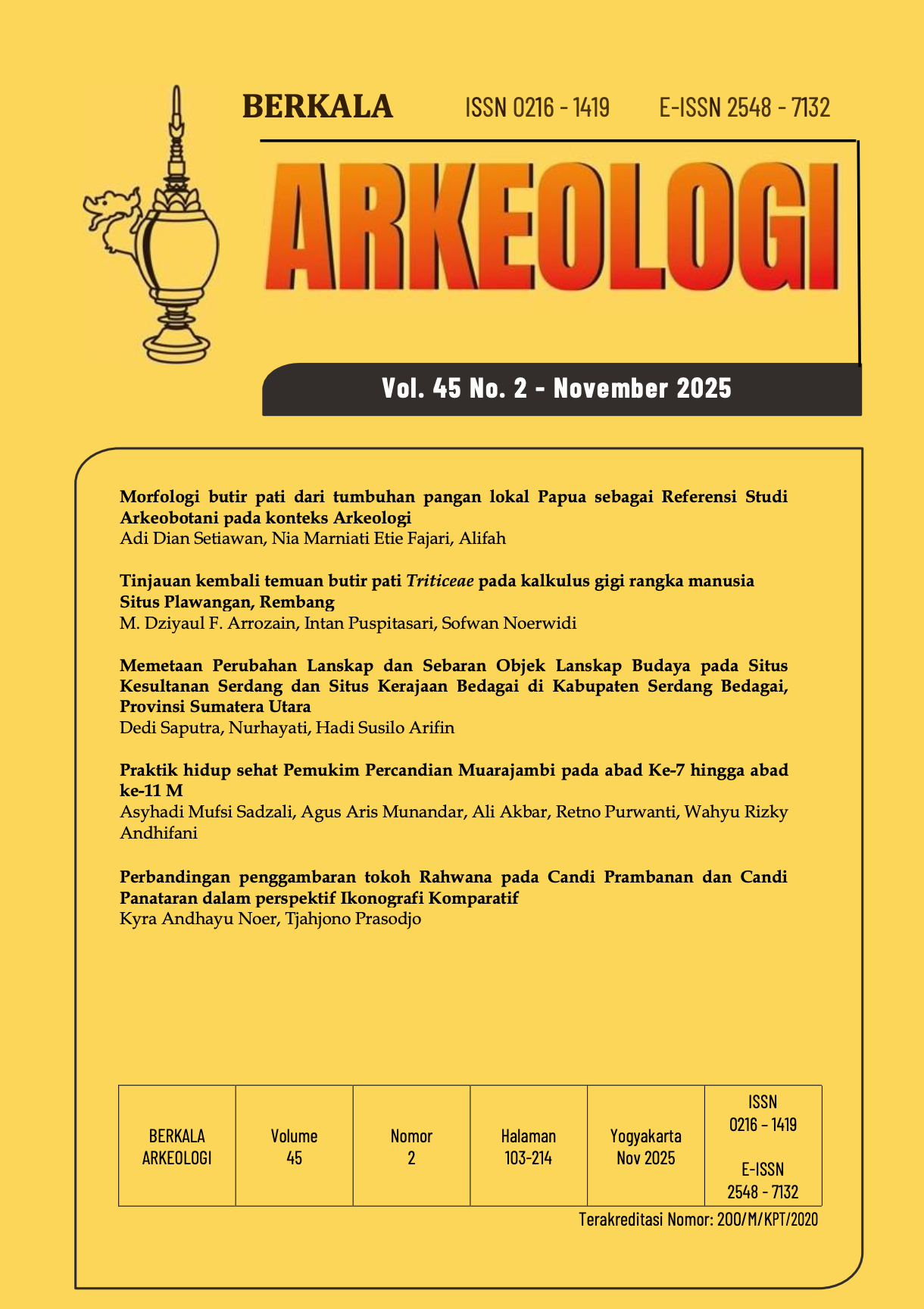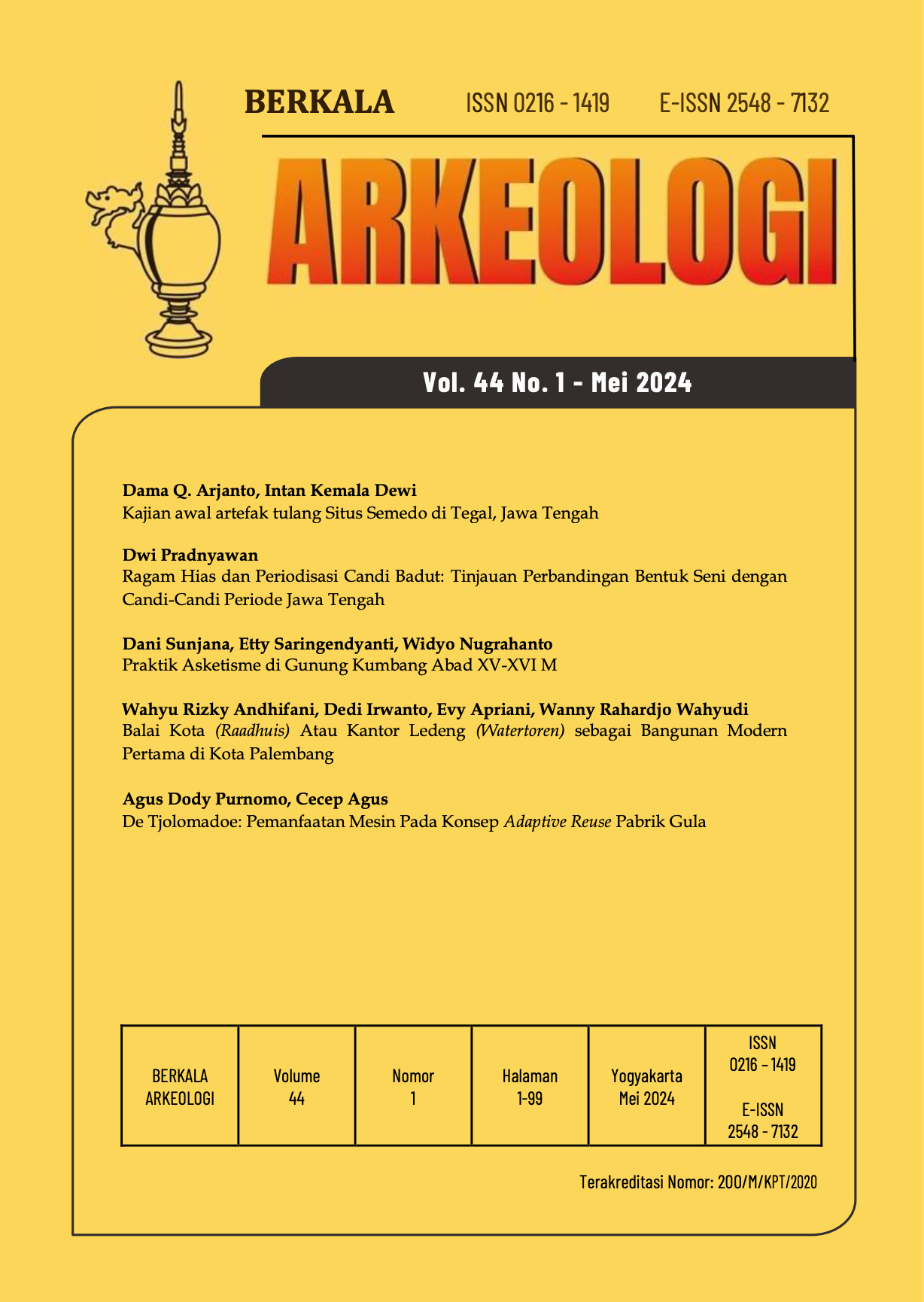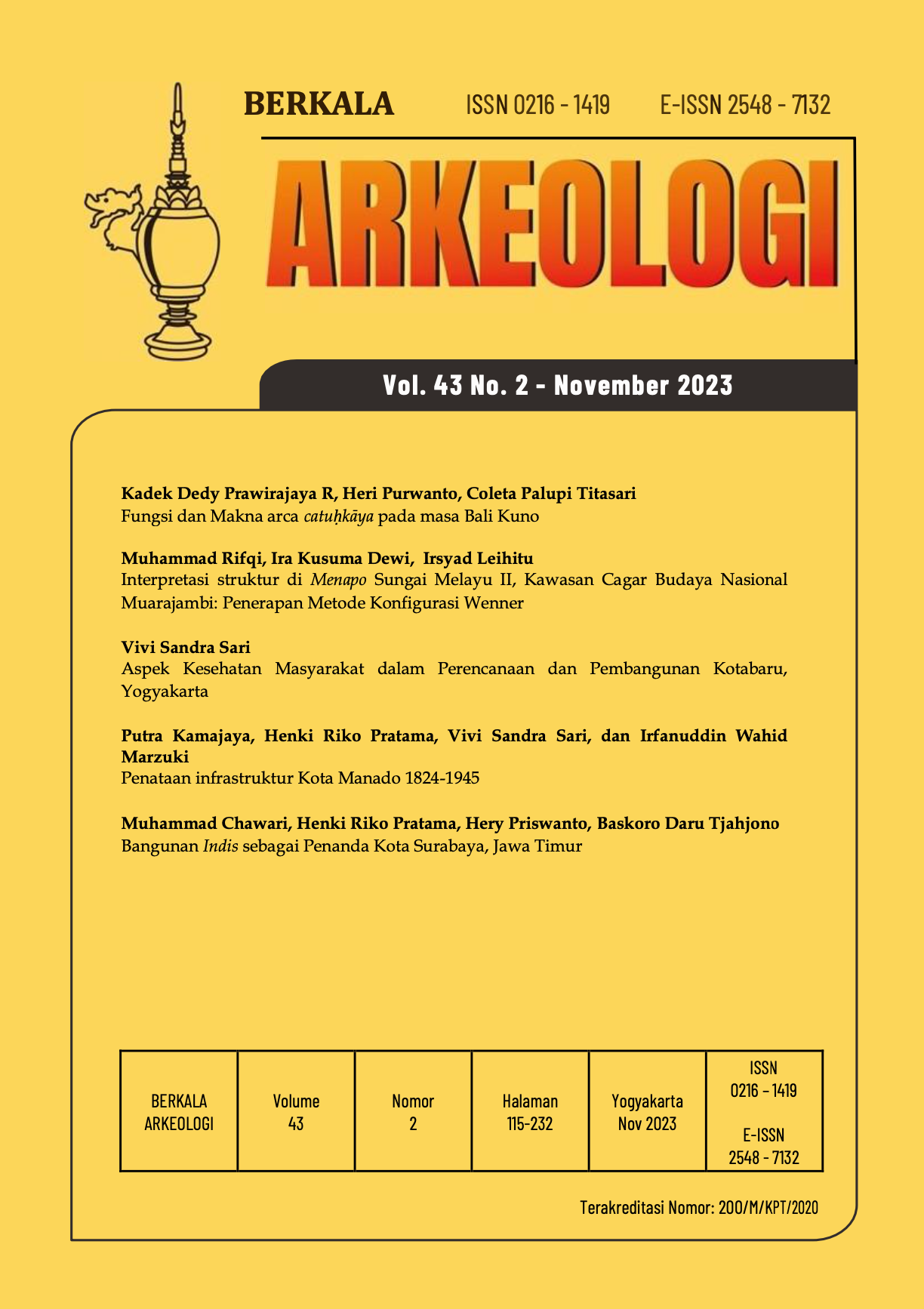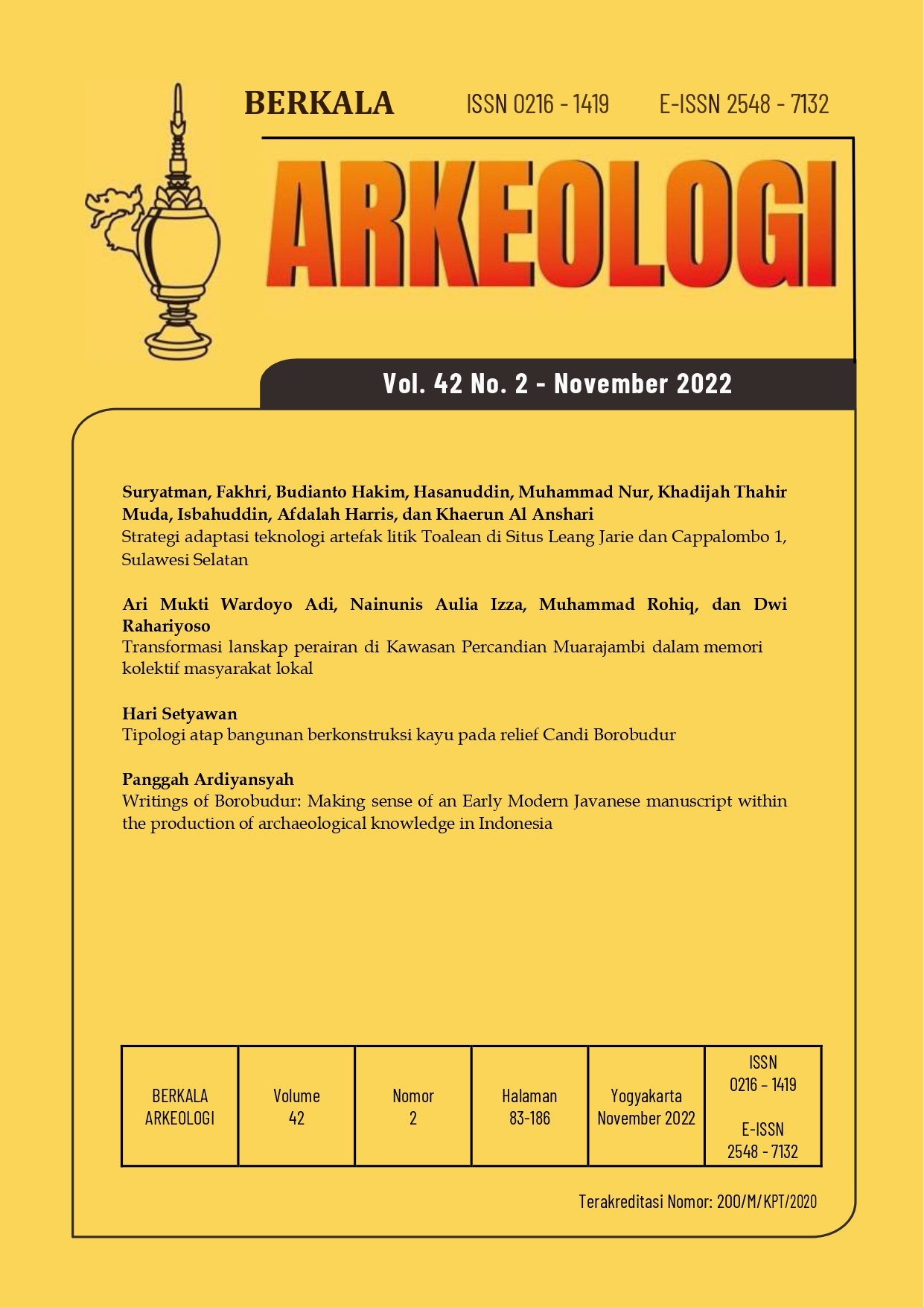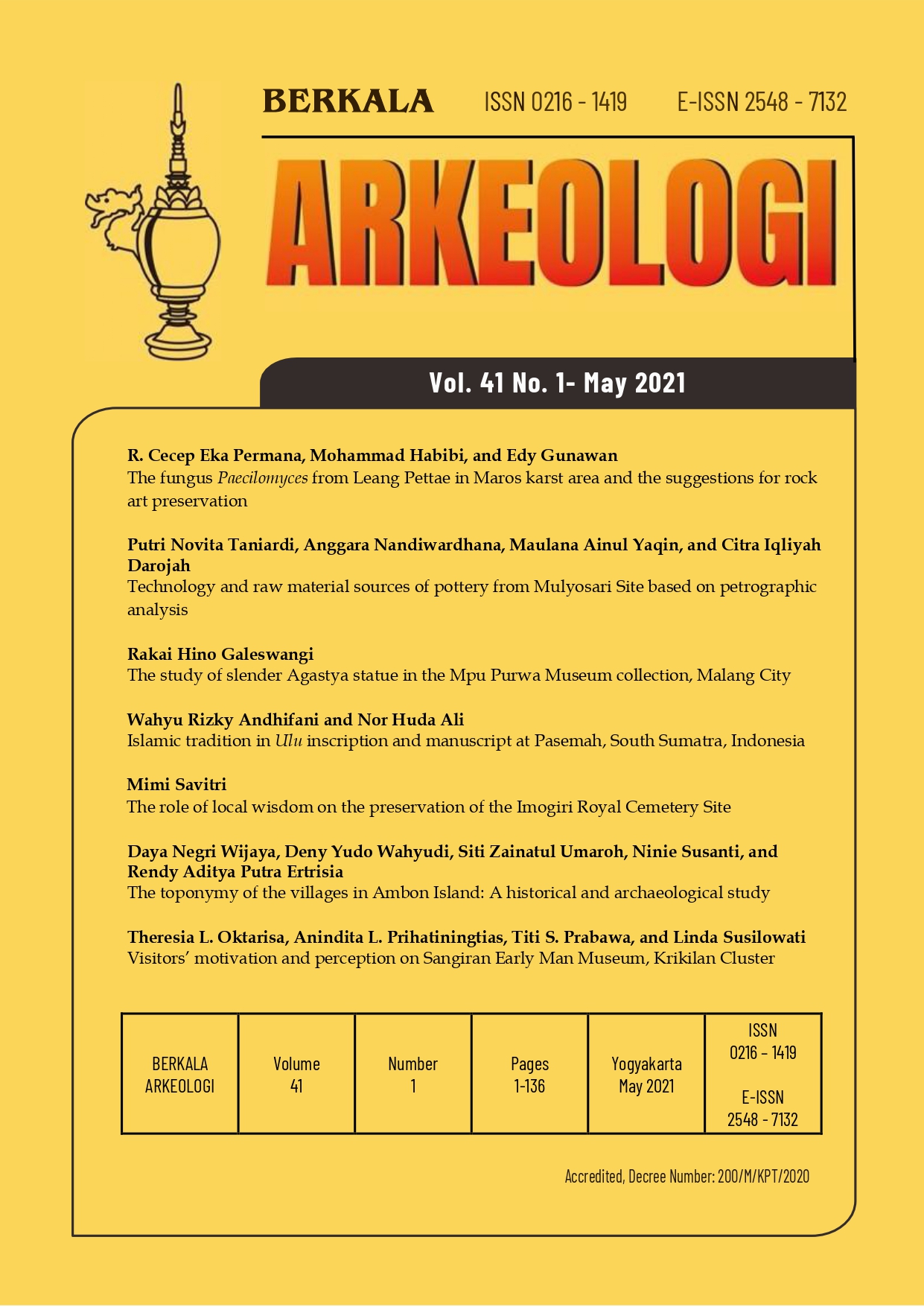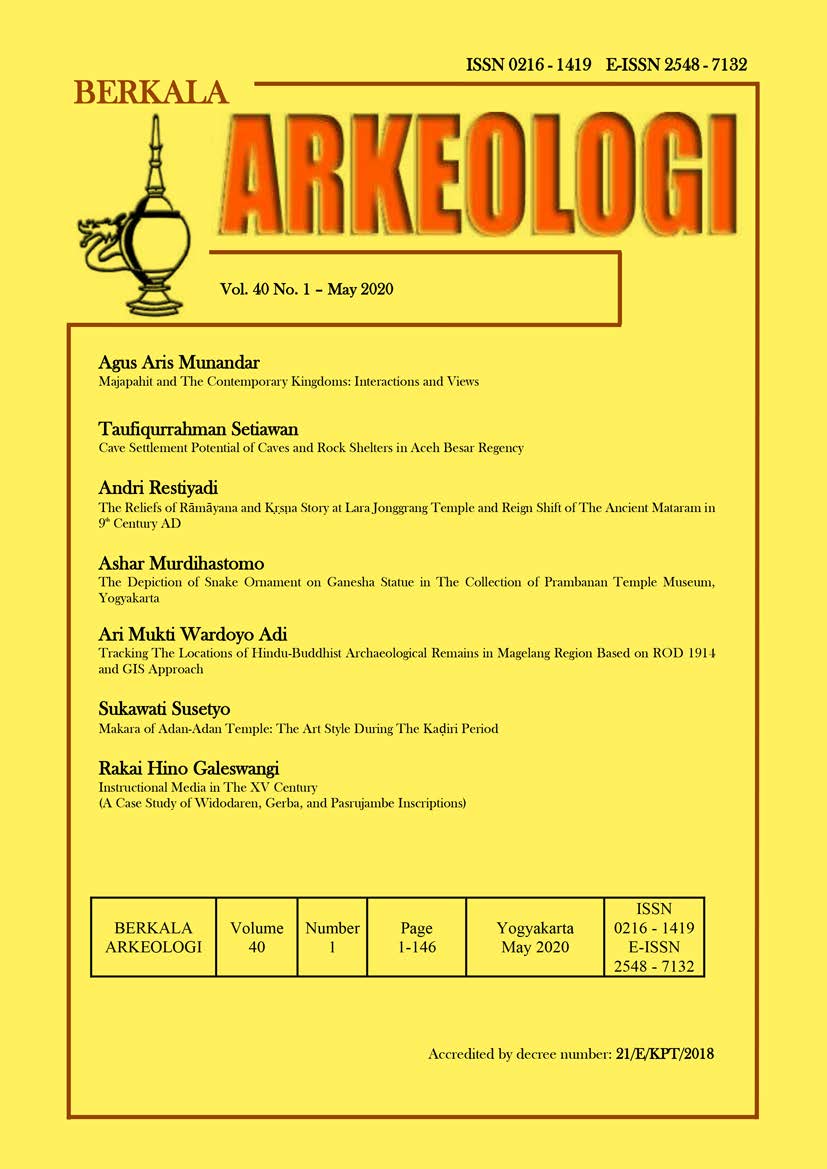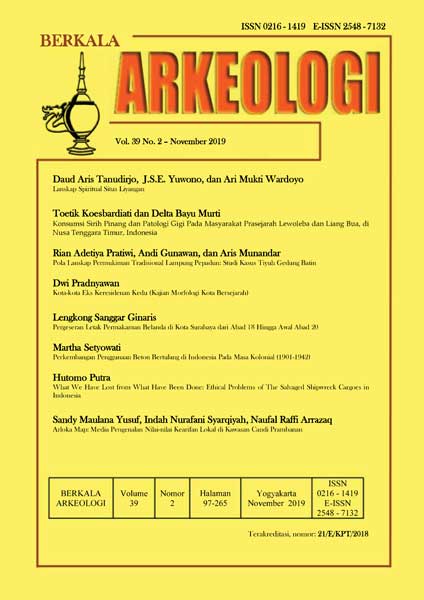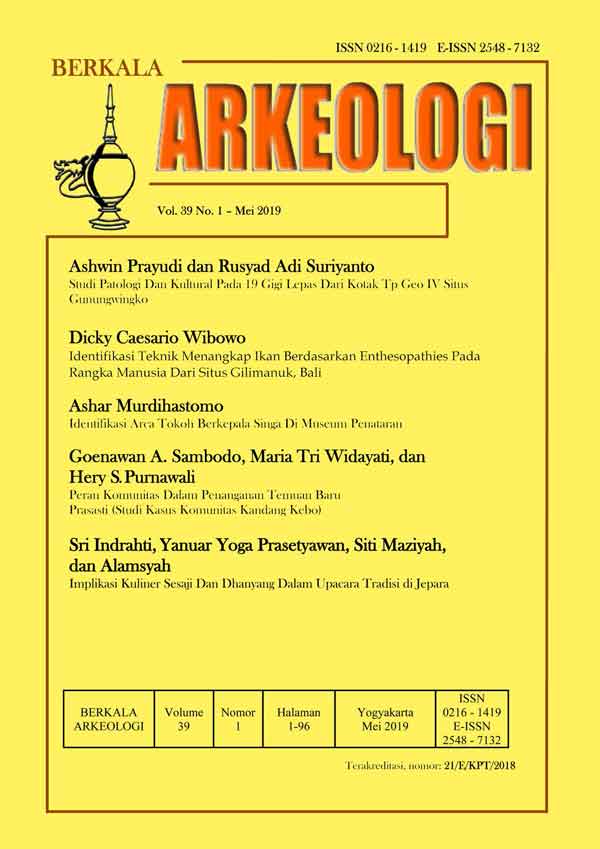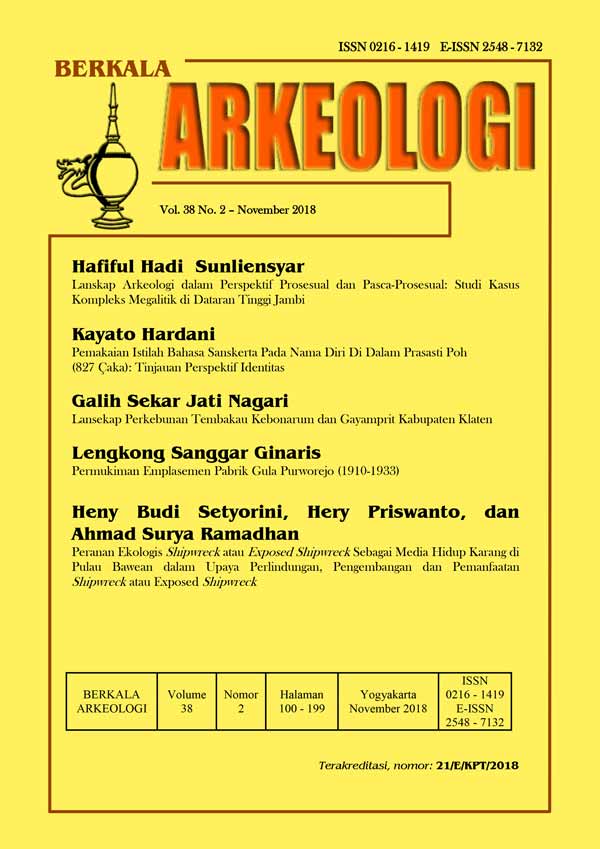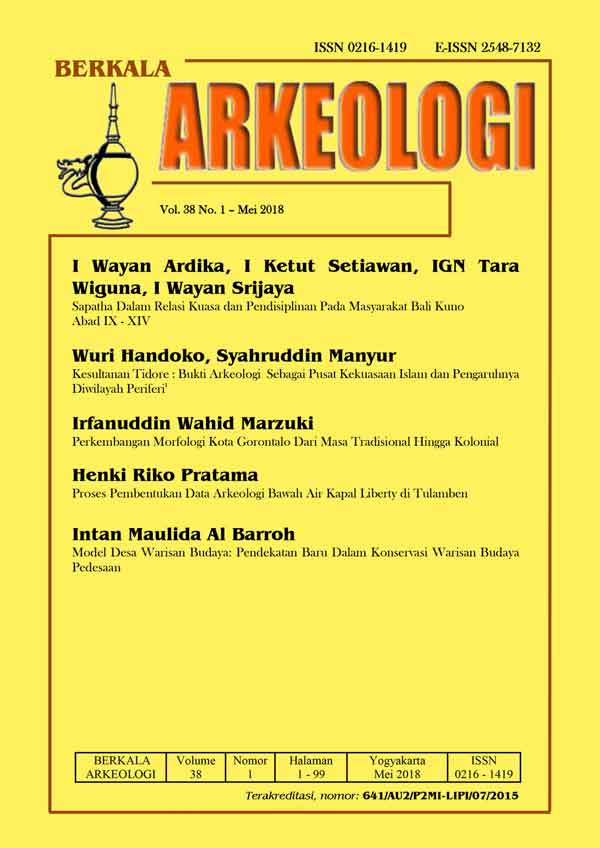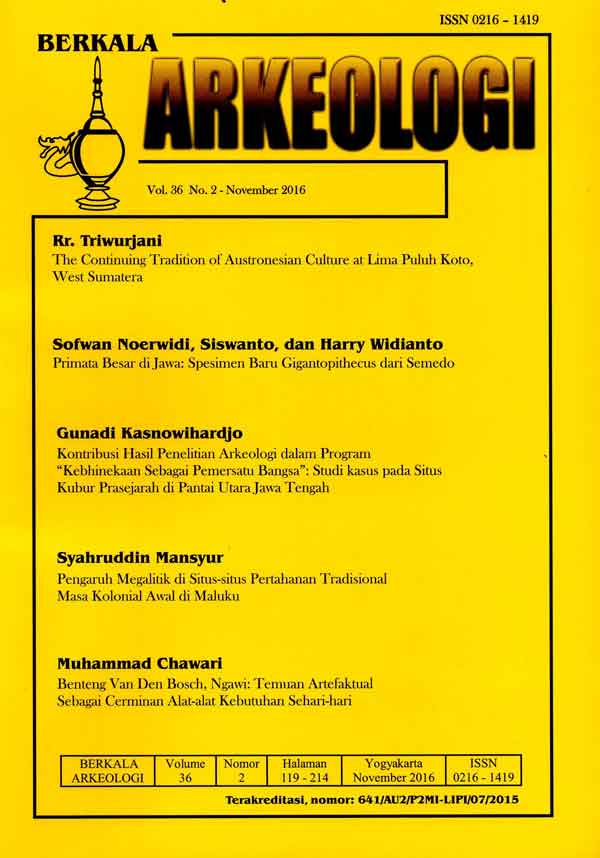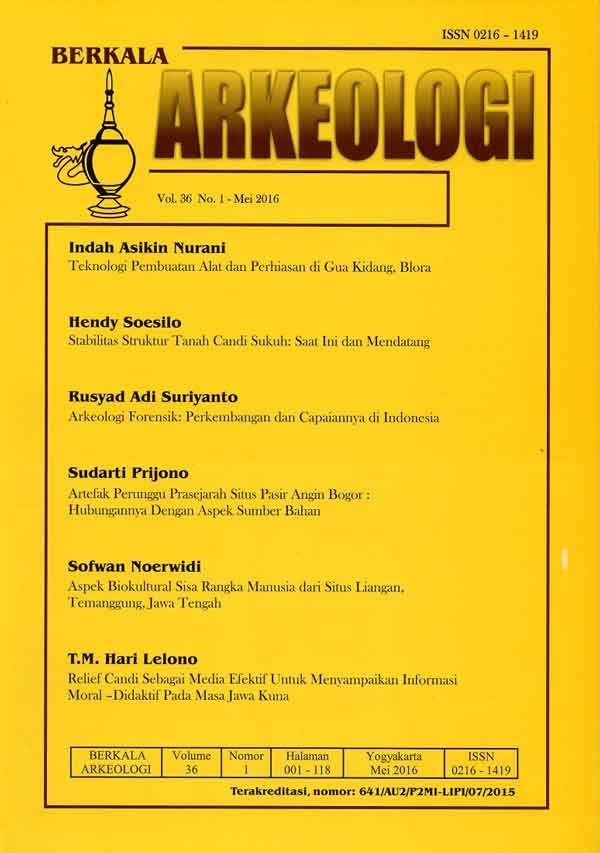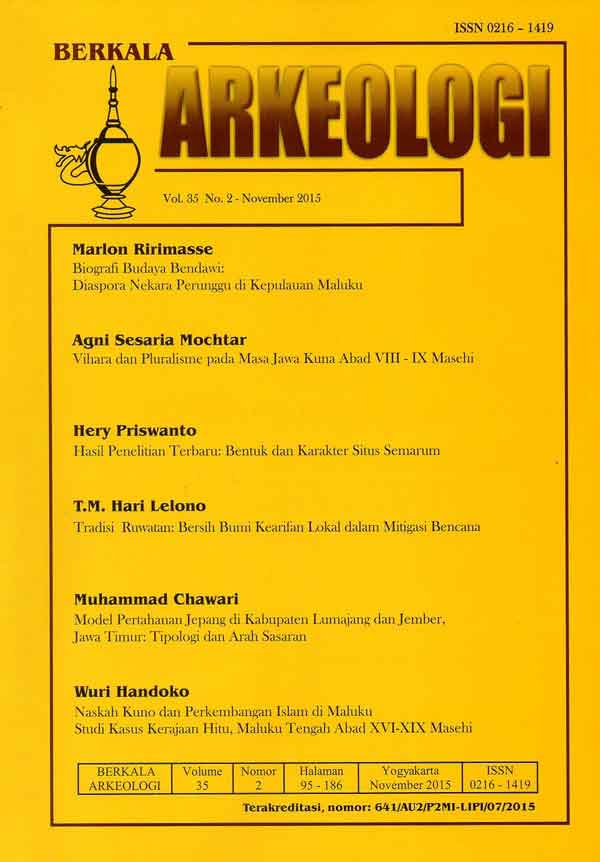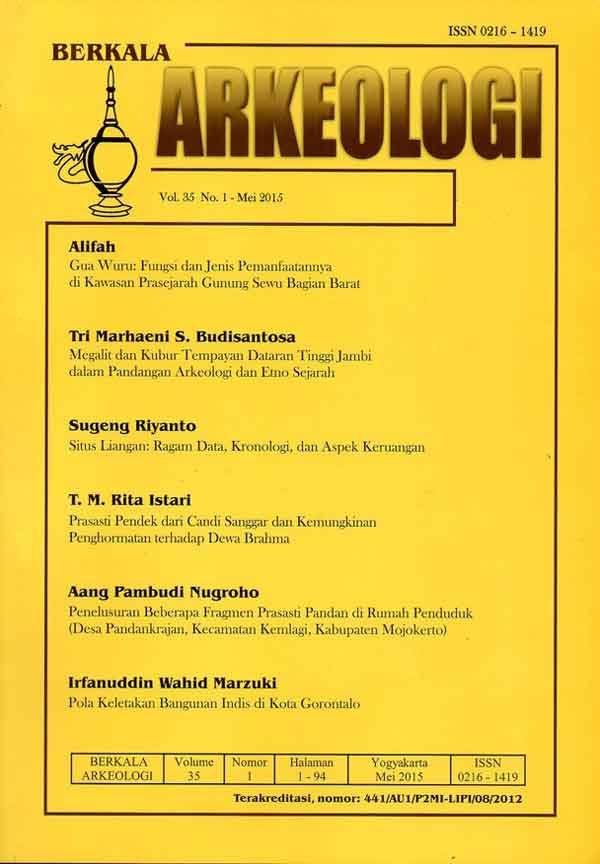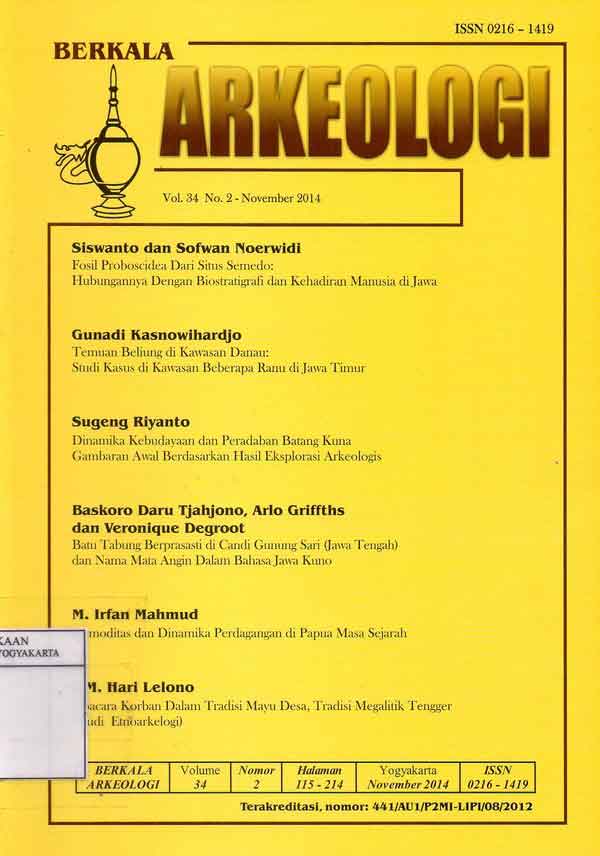Vol. 45 No. 2 2025
Vol. 45 No. 2 (2025)
Dear readers,
Alhamdulillahi robbil’alamiin, Berkala Arkeologi Volume 45 Issue No. 2, November 2025 Edition, was published on time, with five articles on multidisciplinary archaeology. The first and second articles focus on archaeometric studies, while the third examines landscape archaeology. The fourth and fifth articles are comparative archaeological studies applied to the life patterns of past communities in Muarajambi and Javanese sculpture. The fifth article, published in the November 2025 edition, is written by researchers from BRIN, associations, and academics from various universities in Indonesia.
Vol. 42 No. 2 (2022)
Berkala Arkeologi Vol. 42 No. 2 The November 2022 was published in a period of adjustment and transition. The transition from the Ministry of Education, Culture, Research and Technology to the National Research and Innovation Agency (BRIN) have affected the performance of our Journal Managers and Editors. This November 2022 edition of Berkala Arkeologi represents our last edition under the publisher name of Balai Arkeologi Yogyakarta, Kementerian Pendidikan dan Kebudayaan. Next volume from 2023 onwards will be published under the publisher name of the National Research and Innovation Agency (BRIN). This edition consists of four articles, ranging from prehistoric archaeology, to historical archaeology.
Vol. 42 No. 1 (2022)
The merger of the research and development department on all ministries into the National Research and Innovation Agency (BRIN) had delayed the editorial process of this edition, due to the different procedure of scientific journal management to the one we had at the Ministry of Education, Culture, Research, and Technology (Kemendikbudristek). The delay reduced the number of articles published in this edition compared to the previous ones, from seven to four. The first two articles discuss prehistoric cave occupation sites and the other two discuss the semiotics of Buddhist archaeological sites.
Vol. 41 No. 2 (2021)
Dearest Reader,
All praise and greatest gratitude despite the enormously-tight agenda within the final period of the year, Berkala Arkeologi manage to publish this Vol. 41 No. 2 November 2021 Edition on time. The implementation of PPKM (Enforcement of Restrictions on Community Activities) that leads to intense and restricted schedule and followed by the approval for all field research activities that involves editorial board personnel and a close schedule for this Scientific Journal publication has been successfully overcome. This November 2021 edition of the Berkala Arkeologi publishes seven articles from various archaeological studies. Two articles on prehistoric archaeology, two articles on Hindu-Buddhist archaeology, one on Islamic-Colonial archaeology, one on metallurgy and the environment, and one on underwater archaeology.
Published: 2021-11-30
Vol. 41 No. 1 (2021)
Dear readers,
Starting from Berkala Arkeologi Vol. 41, Issue No. 1, May 2021 there is little difference in its appearance, given the demands of the times and the comfort in reading. The cover and front pages of each article will give it a global feel that reflects scientific publications. Changes are also made to the writing of citations that will easily be traced to links that are included both on the citation application (Mendeley) and directly on the source of the link. Hopefully, the change will provide convenience to readers in tracing the reference citation links used by each article. In addition, links can also be traced to images or tables as illustrations in the discussion of each article.
This May 2021 edition of Berkala Arkeologi, features seven articles from various research results and periods in archaeology. Two articles review prehistoric dwellings, where one of them is about mushrooms that damage rock drawings in Leang Pattae and the other on petrographic analysis of pottery on the Mulyosari megalithic site. One article discusses the Hindu-Buddhist heritage about the Agastya statue of Mpu Purwa Museum collection. In addition, two articles studied Islamic remains, where one of the articles is about Islamic tradition in inscriptions and manuscripts in the Pasemah Region, and the other article about the local wisdom of the preservation of the Imogiri Royal Cemetery. The other two articles are about the archaeological study of the history of toponymy villages in Nusa Ambon and lastly the motivation and perception of the Krikilan cluster of Sangiran Museum’s visitors.
Published: 2021-05-30
Vol. 40 No. 2 (2020)
Honorable readers,
It has been two years since Berkala Arkeologi has started to pioneer several changes both in the editorial and management side. In 2020, these efforts have been showing positive impacts for this journal. Starting from developing in the management of online pages, improving the consistency of journal styles, to publishing in two languages. All these have led Berkala Arkeologi to enter the indexation of the Directory of Open Access Journal (DOAJ), increasing the number of visits to online pages, as well as the citation number. Our gratitude goes to the readers who have supported and accompanied 40 years of this journal's journey.
Closing the editorial process in 2020, like the May 2020 edition, in this November 2020 edition, Berkala Arkeologi published in two language versions, Bahasa Indonesia and English. Seven manuscripts in the editorial processes use Bahasa Indonesia, which then were translated into English, after being declared fit for publication by the Editors and Reviewers. One other text is in English and is not translated into Indonesian. The translation from Indonesian to English is intended to be enjoyed by wider range of readers.
Vol. 40 No. 1 (2020)
In 2020, Berkala Arkeologi is in its 40th year, an extraordinary achievement in the long journey of a scientific journal. Since the first publication in 1980, the journal has been continuously publishing scientific papers from the manual (typewriter) era until the digital era, and today in the global era of the open journal system. Therefore, Berkala Arkeologi in this edition is expected to show its maturity in the presentation, both in the content and managerial aspects of the journal. This May 2020 edition is different from the previous ones since it is published in two versions, Indonesian and English. Most of the editorial process still uses Indonesian articles. After completing the editorial process, the articles are then translated into English. We still maintain articles in Indonesian, which are published together with the English version, in the hope of increasing comfort for the readers. The Berkala Arkeologi Vol. 40, No. 1 May 2020 edition features seven articles, mostly on Hindu-Buddhist Archeology. The seven articles include a prehistoric archeological article and six Hindu-Buddhist archeological articles.
Vol. 37 No. 2 (2017)
Vol. 37 No. 2 (2017)

